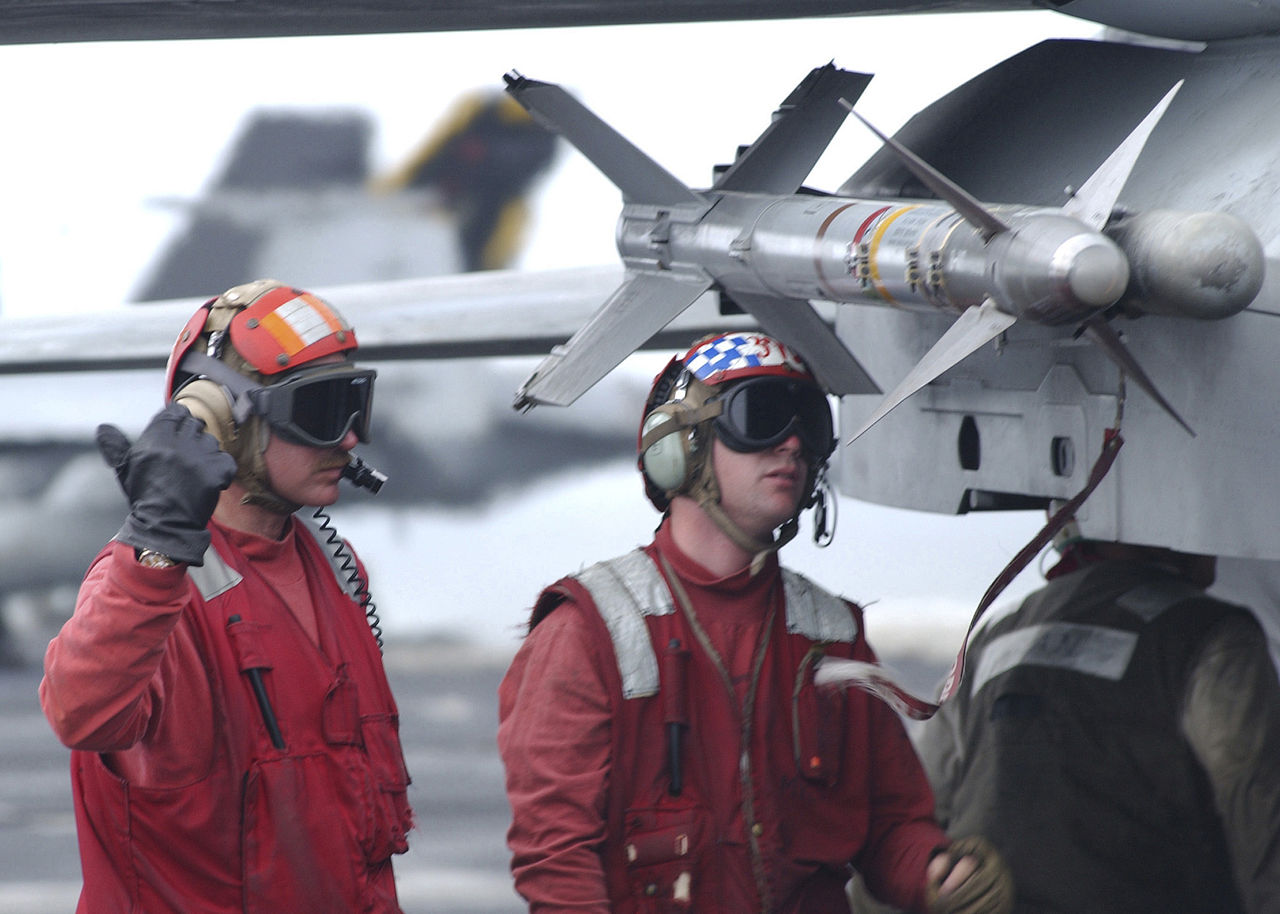
The US Military Needs the AIM-9 Sidewinder Air-to-Air Missile
Despite their age, air-to-air missiles like the AIM-9 remain essential as America upgrades to counter rising threats with advanced systems like the AIM-260 and AIM-174B.
The United States has one of the world’s most advanced and diverse inventories of air-to-air missiles. The exact size of the current inventory remains classified. However, available procurement data and known modernization efforts indicate that the current inventory is robust and advanced—the result of decades of technological innovation, all geared toward supporting the US strategic initiative of maintaining aerial superiority.
Air-to-air missiles, designed to intercept and destroy enemy aircraft, typically fall into one of two categories. One, short-range infrared-guided weapons. Two, longer-range radar-guided weapons.
Why Are Air-to-Air Missiles So Important to the United States?
For short-range systems, the US is primarily dependent on the AIM-9 Sidewinder. This heat-seeking missile has been in service since the 1950s and has undergone continuous upgrades to remain relevant. The most modern iteration of the Sidewinder, the AIM-9X Block II, features advanced guidance systems and high off-foresight targeting capabilities.
Despite being seven decades old, the Sidewinder remains a foundational component of US air combat performance, thanks to its reliability, maneuverability, and ease of integration across platforms such as the F-22, F-35, F/A-18, and F-15. Over 110,000 Sidewinders have been produced throughout the missile’s lifetime, making it one of the most widely produced missiles ever.
For medium- to long-range encounters, the United States relies upon the AIM-120 AMRAAM (Advanced Medium-Range Air-to-Air Missile). The AMRAAM is the true workhorse of the US air-to-air missile inventory. With active radar guidance, the AMRAAM enables combat beyond-visual-range (BVR) engagement, allowing pilots to target and engage without maintaining direct radar lock.
The value of the AMRAAM is evident in the Pentagon’s continued procurement of AMRAAMS in significant numbers. Over 450 units were planned for production in FY2024, with an additional 660 units planned by 2026. And while the AMRAAM remains moderately effective, the US is busy developing a next-generation replacement: the AIM-260 JATM (Joint Advanced Tactical Missile).
The AIM-260 JATM is a long-range air-to-air weapon designed to counter advanced threats (i.e., China’s PL-15 missile). The specifics of the AIM-260 program remain unknown, but the rocket is expected to exceed the range and capabilities of the AMRAAM while still being fired from the same platforms. Production on the AIM-260 has already begun, and although it is still being held in secret, the platform is expected to become the primary long-range missile for US fighters shortly.
In addition, the US Navy is beginning to field the AIM-174B “Gunslinger,” an air-launched version of the SM-6 surface-to-air (SAM) missile. The Gunslinger is being outfitted to the F/A-18 Super Hornet, allowing for long-range engagement with targets beyond 130 nautical miles.
Why Does Congress Care So Much About Air-to-Air Missiles?
The frequency of congressional mandates requiring assessments of inventory adequacy demonstrates the strategic importance of the air-to-air missile. Congress would not be so concerned were the platform not vital to US strategic interests. Driving the congressional reviews further: rising global tensions, placing an onus on US readiness. In the modern landscape of warfare, readiness demands a sufficient stockpile of air-to-air missiles.
Indeed, missile use is increasing, both due to training demands and real-world operations, forcing lawmakers and military planners to focus on maintaining air-to-air production capacity.
The US air-to-air missile inventory remains one of the world’s most robust and versatile. While still dependent on legacy systems like the AIM-9 and AIM-120, the transition is already underway, marking the emergence of next-generation systems, such as the AIM-260 and AIM-174B.
About the Author: Harrison Kass
Harrison Kass is a Senior Defense and National Security Writer at The National Interest. Kass is an attorney and former political candidate who joined the US Air Force as a pilot trainee before being medically discharged. He focuses on military strategy, aerospace, and global security affairs. He holds a JD from the University of Oregon and a master’s in Global Journalism and International Relations from NYU.
Image Credit: Wikimedia Commons/US Navy.
The post The US Military Needs the AIM-9 Sidewinder Air-to-Air Missile appeared first on The National Interest.

















